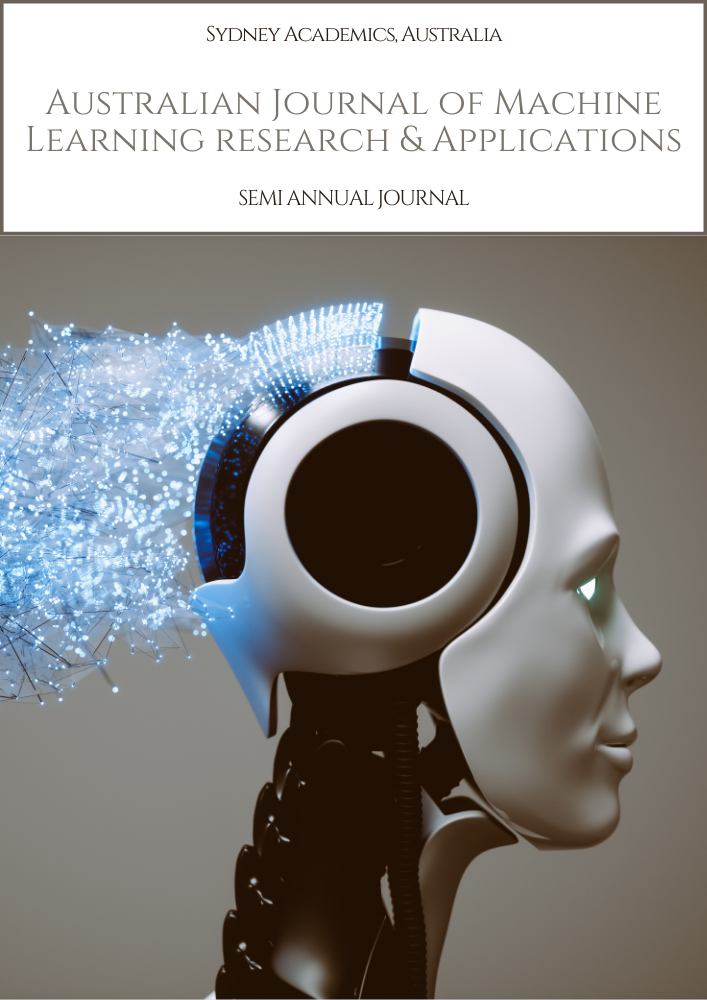Machine Learning-Enabled Security Operations Centers
A New Paradigm for Real-Time Cyber Threat Mitigation
Keywords:
Machine Learning, Security Operations Center, Cybersecurity, Threat Detection, Real-Time Mitigation, Artificial IntelligenceAbstract
The increasing complexity of cyber threats necessitates the evolution of Security Operations Centers (SOCs) to enhance their efficiency and effectiveness in real-time threat mitigation. This paper explores the integration of machine learning (ML) models into SOCs, emphasizing their potential to revolutionize cybersecurity practices. It discusses various ML techniques, such as supervised and unsupervised learning, and their applications in threat detection and response. Moreover, the paper examines the benefits of implementing ML in SOCs, including improved accuracy, reduced false positives, and faster response times. Furthermore, it highlights the challenges faced in adopting these technologies and provides recommendations for organizations seeking to enhance their cybersecurity posture through ML-enabled SOCs. The findings suggest that the integration of ML into SOCs represents a significant advancement in proactive threat management, enabling organizations to respond more effectively to an ever-evolving threat landscape.
Downloads
References
Vangoor, Vinay Kumar Reddy, et al. "Zero Trust Architecture: Implementing Microsegmentation in Enterprise Networks." Journal of Artificial Intelligence Research and Applications 4.1 (2024): 512-538.
Gayam, Swaroop Reddy. "Artificial Intelligence in E-Commerce: Advanced Techniques for Personalized Recommendations, Customer Segmentation, and Dynamic Pricing." Journal of Bioinformatics and Artificial Intelligence 1.1 (2021): 105-150.
Nimmagadda, Venkata Siva Prakash. "Artificial Intelligence for Predictive Maintenance of Banking IT Infrastructure: Advanced Techniques, Applications, and Real-World Case Studies." Journal of Deep Learning in Genomic Data Analysis 2.1 (2022): 86-122.
Putha, Sudharshan. "AI-Driven Predictive Analytics for Maintenance and Reliability Engineering in Manufacturing." Journal of AI in Healthcare and Medicine 2.1 (2022): 383-417.
Sahu, Mohit Kumar. "Machine Learning for Personalized Marketing and Customer Engagement in Retail: Techniques, Models, and Real-World Applications." Journal of Artificial Intelligence Research and Applications 2.1 (2022): 219-254.
Kasaraneni, Bhavani Prasad. "AI-Driven Policy Administration in Life Insurance: Enhancing Efficiency, Accuracy, and Customer Experience." Journal of Artificial Intelligence Research and Applications 1.1 (2021): 407-458.
Kondapaka, Krishna Kanth. "AI-Driven Demand Sensing and Response Strategies in Retail Supply Chains: Advanced Models, Techniques, and Real-World Applications." Journal of Artificial Intelligence Research and Applications 1.1 (2021): 459-487.
Kasaraneni, Ramana Kumar. "AI-Enhanced Process Optimization in Manufacturing: Leveraging Data Analytics for Continuous Improvement." Journal of Artificial Intelligence Research and Applications 1.1 (2021): 488-530.
Pattyam, Sandeep Pushyamitra. "AI-Enhanced Natural Language Processing: Techniques for Automated Text Analysis, Sentiment Detection, and Conversational Agents." Journal of Artificial Intelligence Research and Applications 1.1 (2021): 371-406.
Kuna, Siva Sarana. "The Role of Natural Language Processing in Enhancing Insurance Document Processing." Journal of Bioinformatics and Artificial Intelligence 3.1 (2023): 289-335.
George, Jabin Geevarghese, et al. "AI-Driven Sentiment Analysis for Enhanced Predictive Maintenance and Customer Insights in Enterprise Systems." Nanotechnology Perceptions (2024): 1018-1034.
P. Katari, V. Rama Raju Alluri, A. K. P. Venkata, L. Gudala, and S. Ganesh Reddy, “Quantum-Resistant Cryptography: Practical Implementations for Post-Quantum Security”, Asian J. Multi. Res. Rev., vol. 1, no. 2, pp. 283–307, Dec. 2020
Karunakaran, Arun Rasika. "Maximizing Efficiency: Leveraging AI for Macro Space Optimization in Various Grocery Retail Formats." Journal of AI-Assisted Scientific Discovery 2.2 (2022): 151-188.
Sengottaiyan, Krishnamoorthy, and Manojdeep Singh Jasrotia. "Relocation of Manufacturing Lines-A Structured Approach for Success." International Journal of Science and Research (IJSR) 13.6 (2024): 1176-1181.
Paul, Debasish, Gunaseelan Namperumal, and Yeswanth Surampudi. "Optimizing LLM Training for Financial Services: Best Practices for Model Accuracy, Risk Management, and Compliance in AI-Powered Financial Applications." Journal of Artificial Intelligence Research and Applications 3.2 (2023): 550-588.
Namperumal, Gunaseelan, Akila Selvaraj, and Yeswanth Surampudi. "Synthetic Data Generation for Credit Scoring Models: Leveraging AI and Machine Learning to Improve Predictive Accuracy and Reduce Bias in Financial Services." Journal of Artificial Intelligence Research 2.1 (2022): 168-204.
Soundarapandiyan, Rajalakshmi, Praveen Sivathapandi, and Yeswanth Surampudi. "Enhancing Algorithmic Trading Strategies with Synthetic Market Data: AI/ML Approaches for Simulating High-Frequency Trading Environments." Journal of Artificial Intelligence Research and Applications 2.1 (2022): 333-373.
Pradeep Manivannan, Amsa Selvaraj, and Jim Todd Sunder Singh. “Strategic Development of Innovative MarTech Roadmaps for Enhanced System Capabilities and Dependency Reduction”. Journal of Science & Technology, vol. 3, no. 3, May 2022, pp. 243-85
Yellepeddi, Sai Manoj, et al. "Federated Learning for Collaborative Threat Intelligence Sharing: A Practical Approach." Distributed Learning and Broad Applications in Scientific Research 5 (2019): 146-167.
Wu, C., & Zhou, S. (2020). Addressing algorithmic bias in cybersecurity: Challenges and solutions. Journal of Cybersecurity and Privacy, 1(1), 1-15.
Yang, J., & Zhang, L. (2019). Data quality in machine learning for cybersecurity: Implications and strategies. Journal of Information Security Research, 4(2), 89-101.
Zhang, Y., & Wang, H. (2020). Maintaining machine learning models in cybersecurity: Best practices and considerations. Journal of Cybersecurity and Privacy, 2(2), 143-156.
Zhao, Y., & Lin, Y. (2021). Explainable AI in cybersecurity: Bridging the gap between trust and transparency. Journal of Cybersecurity Research, 4(2), 145-160.
Zhou, J., & Chen, L. (2019). Enhancing transparency in machine learning for cybersecurity: Challenges and solutions. Computers & Security, 83, 183-195.
Zuev, A., & Bostandzhiev, D. (2020). Implementing machine learning in SOCs: A phased approach for success. International Journal of Cybersecurity Research, 3(1), 5-16.
J. Devlin, M. W. Chang, K. Lee, and K. Toutanova, "BERT: Pre-training of deep bidirectional transformers for language understanding," in Proceedings of the 2019 Conference of the North American Chapter of the Association for Computational Linguistics: Human Language Technologies, 2019, pp. 4171-4186.
A. Vaswani et al., "Attention is all you need," in Proceedings of the 31st International Conference on Neural Information Processing Systems (NeurIPS), 2017, pp. 5998-6008.


